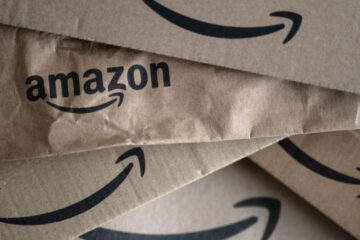Thanks to the work of Apple, Microsoft, Google, Amazon, Oracle, and others in the late 1990s and early 2000s, Silicon Valley became the engine of industrial growth for the U.S.
Besides all of the useful technology that came out of that era, one of the things some of the companies also mastered was brand loyalty.
People love their technology. Especially when they first debuted, smartphones became a part of people’s personalities.
Related: Tesla rival makes huge announcement about what’s coming in 2026
Like other cultural touchstones, the type of phone you carried said a lot about you.
You were either the business-focused, rat-race-running, stuck-up Blackberry user or the laid-back, young, carefree Apple user.
It’s the type of branding other industries dream of because brand loyalty is something you can’t buy. Either your customers love your products, or they don’t.
While Blackberry phones eventually went the way of the Dodo, to this day, Apple’s brand loyalty causes envy.
Apple’s Net Promoter Score (NPS) of 72, which measures customer satisfaction and retention, is one of the highest in the tech industry.
Tesla (TSLA) was born in Silicon Valley, and still, CEO Elon Musk insists that you treat his electric vehicle maker like a Silicon Valley tech company, not like a traditional auto manufacturer.
It even has the NPS score to back this claim.
Tesla lessees were required to return their cars at the end of the contract with no option to buy.
Image source: Brauer/Bloomberg via Getty Images
Tesla is foolishly playing with its brand loyalty
Tesla’s NPS score of 97 significantly outpaces that of any of its auto rivals. In fact, anything above 40 is considered good. This is especially impressive, considering Tesla does not advertise much in the traditional sense like its rivals.
However, brand loyalty is fluid, and companies can do a lot to damage something so precious.
This week, Reuters published an exclusive report detailing how the company misled Tesla lessees about why they were not allowed to purchase the vehicles at lease end.
Related: Here’s why Tesla’s robotaxi launch is destined to fail
In 2019, Tesla started a policy telling customers they could lease the then-new, mass-market Model 3 sedan, but they could not purchase the vehicle at the end of the contract because Tesla planned to use the vehicles for its autonomous robotaxi network.
“You don’t have the option of buying,” CEO Elon Musk bluntly told buyers in 2019, according to Reuters. “We want them back,” because “next year for sure we’ll have over 1 million robotaxis on the road.”
Six years later, there is not even one robotaxi on the road, much less one million, but Tesla kept reclaiming the leased vehicles anyway. A Reuters report finally reveals what the company did with those cars.
It resold them.
Rather than storing the cars for future use in its robotaxi fleet, like Musk said, Tesla immediately began reselling the vehicles, four sources familiar with the company’s inner workings told Reuters.
Tesla souped up the vehicles with software updates, jacked up the price, and then resold them to eager buyers, who ended up paying thousands more than lease-end buyers would have.
Tesla did not respond to a request for comment.
The Reuters report emphasized that this is apparently not an illegal practice, but it did perpetuate the myth among investors that Tesla was near its fully autonomous driving goals, when time has revealed that at the time, it wasn’t even close.
Tesla robotaxi future called into question
Investors had two major reasons to celebrate Tesla’s last earnings call.
The big news was that Elon Musk would be stepping down from running DOGE full-time to focus more on Tesla. The other bit of news was confirmation that Tesla’s robotaxi program would start this summer in its hometown of Austin, Texas.
But not everyone is buying that Tesla will be ready in just a few weeks.
Piper Sandler analyst Alexander Potter and his team don’t think FSD version 13 is advanced enough to handle the challenge.
Despite its bullish outlook, the firm says that FSD version 13 cannot support truly autonomous vehicles without human control.
It came to this conclusion after a recent call with Elias Martinez, the creator of the FSD Community Tracker, which monitors FSD’s progress.
Tesla hasn’t had a public update to version 13 since it debuted nearly five months ago. Piper Sandler speculates that the company has been focusing on making the Austin launch a success during that time.
The firm said Tesla’s push forward with robotaxi was “the most important Q1 takeaway.” However, the firm now believes Tesla’s technology can’t handle the task and still retains its bullish outlook.
Related: Veteran fund manager unveils eye-popping S&P 500 forecast


